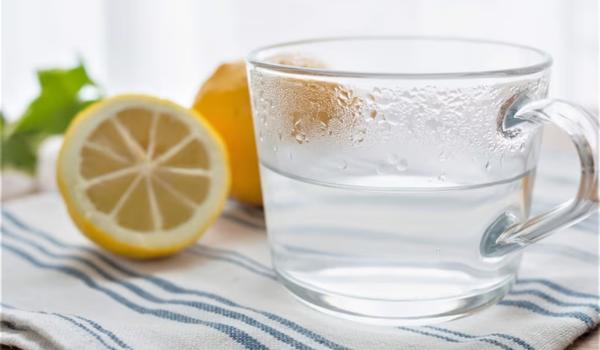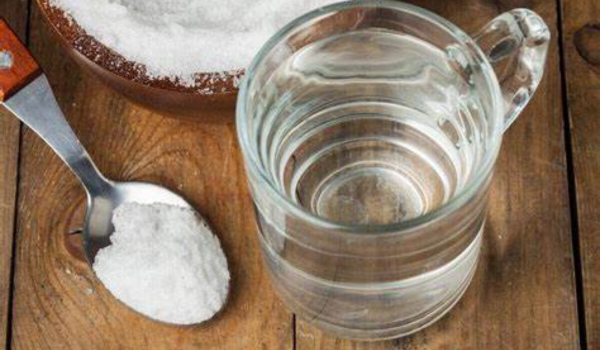Salt Water Flush Recipe: Benefits, How-To & Safety
The Complete Guide to the Salt Water Flush Recipe: Benefits, Preparation, and Safety Tips

Are you searching for a natural, effective way to cleanse your digestive system and jumpstart your wellness journey? The Salt Water Flush might be the solution you’ve heard about.
Whether you’re curious about how it works, the best recipe, or the safety precautions you should take, this comprehensive guide will walk you through everything you need to know.
We believe in empowering you with well-researched health insights and practical advice. Today, we’re diving deep into the Salt Water Flush Recipe a traditional method gaining traction for its claimed benefits in detoxification and digestive health
What Is a Salt Water Flush?
A Salt Water Flush is a natural remedy that involves drinking a mixture of warm water and non-iodized salt to stimulate bowel movements.
It is often used as a quick colon cleanse and is popular among people following detox diets or wanting to relieve constipation.
The flush works because of the osmotic effect of salt in the intestines, drawing water into the bowels, which then triggers a rapid and thorough bowel evacuation.
This effect can help clear the colon of accumulated waste, toxins, and debris.
Why Consider a Salt Water Flush?
The idea behind a salt water flush isn’t new; it’s been used for centuries as a simple, cost-effective way to cleanse the digestive system.
Here are some common reasons people turn to this method:
- Constipation Relief: If you suffer from occasional constipation, the flush can encourage bowel movement quickly.
- Colon Detox: Some proponents believe it helps eliminate toxins trapped in the digestive tract.
- Digestive Reset: It can be part of a fasting or detox program to “reset” digestion.
- Bloating and Gas Reduction: By clearing waste, it may reduce bloating and digestive discomfort.
- Support for Weight Loss Plans: Although not a fat-burning method, clearing the digestive tract can sometimes give a sense of lightness and energy.
How Does the Salt Water Flush Work?
The key mechanism behind a salt water flush is osmotic action. When you drink a saline solution made with non-iodized salt and water, the salt is not absorbed immediately but remains in the intestines, drawing water into the bowel lumen.
This influx of water softens stool and stimulates peristalsis, the muscle contractions that push waste through the colon.
Because the flush moves contents rapidly, it can produce a bowel movement within 30 minutes to an hour after ingestion.
The Salt Water Flush Recipe – Step-by-Step
Here’s how to prepare and perform a salt water flush safely and effectively.
Ingredients
- Non-iodized sea salt (such as Himalayan pink salt, Celtic sea salt, or any pure sea salt without additives) – 2 teaspoons
- Warm filtered water – 1 quart (32 ounces or about 4 cups)
- Optional: Fresh lemon juice or lime for flavor
Equipment
- A large glass or bottle capable of holding 1 quart of water
- Spoon for stirring
- Bathrooms nearby you’ll need it!
Instructions
- Warm the Water: Heat 1 quart of filtered water until warm, about 90°F (32°C). The water should be warm enough to dissolve the salt easily but not hot enough to burn your mouth.
- Add Salt: Stir in 2 teaspoons of non-iodized sea salt until fully dissolved.
- Add Lemon (Optional): If you’d like, add the juice of half a lemon or lime for taste and a mild boost of vitamin C.
- Drink Quickly: Drink the entire quart of saline solution within 5 to 10 minutes on an empty stomach (preferably first thing in the morning). Drinking fast helps the solution reach your intestines quickly.
- Wait and Stay Near a Bathroom: The salt water flush typically triggers bowel movements within 30 minutes to 1 hour. Be prepared to use the bathroom multiple times.

Why Use Non-Iodized Salt?
Choosing the right type of salt is crucial for the flush’s effectiveness and safety.
- Non-iodized salt contains mainly sodium chloride without additives like iodine or anti-caking agents. These additives may irritate the digestive tract or reduce the flush’s osmotic effects.
- Sea salts such as Himalayan pink salt or Celtic sea salt are preferred for their mineral content and purity.
- Avoid table salt, iodized salt, or salts with additives.
What to Expect During and After the Flush?
- You will likely experience frequent, watery bowel movements as your intestines rapidly clear.
- Some users report mild cramping or bloating, which is normal but should not be painful.
- It’s common to feel a lightness or reduced bloating after completing the flush.
- Afterward, make sure to hydrate well with water and consume gentle, nourishing foods.
How Often Should You Do a Salt Water Flush?
Salt water flushes should not be a daily routine. Using the flush too often can:
- Disrupt electrolyte balance
- Cause dehydration
- Irritate the digestive lining
A general recommendation is to use a salt water flush only once a week or less, and never consecutively for days. If you’re using it as part of a detox or cleanse, consult a healthcare professional beforehand.
Potential Benefits of Salt Water Flushes
- Immediate Relief from Constipation: For many, the most immediate and noticeable benefit is relief from constipation. By flushing out accumulated stool, the colon resets its function.
- Colon Cleansing and Detoxification: Though scientific evidence is limited, many advocates believe salt water flushes help detoxify the colon by removing waste buildup.
- Supports Digestive Health: By clearing the digestive tract, the flush can reduce bloating and improve digestion temporarily.
- Preparation for Fasting or Detox Diets: Salt water flushes are often used as a preparation step before extended fasting or detox programs to empty the bowels.
Risks and Considerations – What You Need to Know
Before jumping into a salt water flush, it’s essential to consider some risks and safety concerns.
- Risk of Electrolyte Imbalance: Drinking large amounts of salty water can cause an imbalance of electrolytes like sodium and potassium, which may lead to muscle cramps, weakness, or heart rhythm issues.
- Dehydration Risk: Because salt pulls water into your intestines and out of your body, you can become dehydrated if you don’t compensate by drinking enough clean water afterward.
- Not Suitable for Everyone:
- People with high blood pressure, heart disease, or kidney issues should avoid salt water flushes due to the high sodium content.
-
- Pregnant or breastfeeding women should consult a healthcare provider before trying this.
-
- Individuals with digestive disorders like IBS or Crohn’s disease may experience worsened symptoms.
- Possible Nausea or Vomiting: The strong salty taste and volume can cause nausea in some, especially if consumed too quickly.
Tips for a Safe Salt Water Flush Experience
- Always use non-iodized sea salt.
- Don’t do the flush more than once per week.
- Drink plenty of water before and after the flush to prevent dehydration.
- Stop immediately if you feel unwell or experience severe cramps.
- Avoid the flush if you have chronic health conditions without doctor approval.
- Have a bathroom nearby and plan your timing wisely.

Frequently Asked Questions (FAQs)
Q: Can I use regular table salt for the flush?
- A: No. Table salt contains additives like iodine and anti-caking agents, which may irritate your stomach and reduce the effectiveness of the flush.
Q: How soon after drinking the flush will I have a bowel movement?
- A: Typically, bowel movements occur within 30 minutes to 1 hour after ingestion.
Q: Is it safe to drink salt water flush every day?
- A: No. Daily use can disrupt your body’s electrolyte balance and cause dehydration or other health problems.
Q: Can I add lemon juice or other flavors?
- A: Yes, lemon juice is often added to improve taste and add a small amount of vitamin C. Avoid sugary or acidic additives.
Q: What if I feel dizzy or weak after the flush?
- A: Stop immediately, hydrate with water, and rest. If symptoms persist, seek medical attention.
Alternative Methods for Colon Cleansing and Digestive Health
If the salt water flush sounds intense or unsuitable for your needs, here are other gentle ways to support your digestive health:
- Fiber-Rich Diet: Incorporate more fruits, vegetables, and whole grains.
- Hydration: Drink plenty of water daily.
- Probiotics: Support gut flora with probiotic supplements or fermented foods.
- Herbal Teas: Some teas (like peppermint or ginger) aid digestion.
- Regular Exercise: Promotes healthy bowel movements.
Conclusion
The Salt Water Flush offers a simple, low-cost way to support digestive health and relieve occasional constipation.
By using a precise mix of warm water and non-iodized salt, it can effectively stimulate bowel movements and help you feel lighter and less bloated. However, it’s not a cure-all and should be used with caution.
While some people use it to complement detox plans or prepare for fasting, it’s important to remember that this method is not suitable for everyone and should not be overused.
Always prioritize hydration, listen to your body, and consult a healthcare provider if you have any underlying health conditions or concerns.
Used responsibly, the Salt Water Flush can be a helpful tool in your overall wellness routine but like any health practice, it works best as part of a balanced, mindful lifestyle.
.